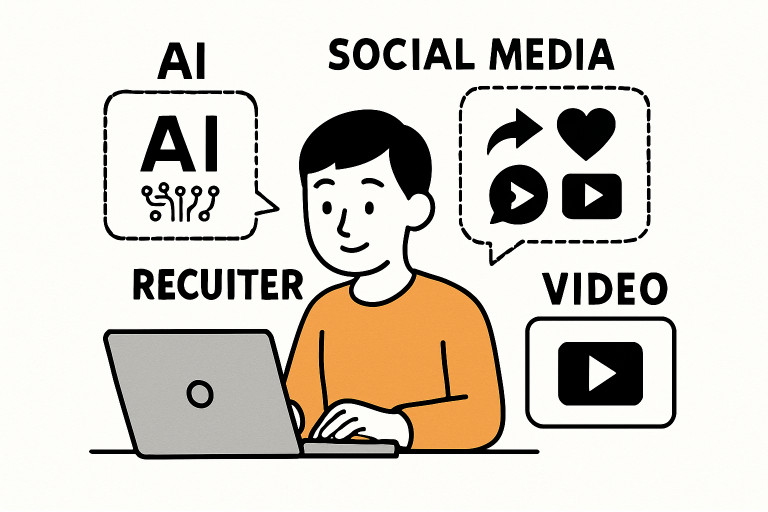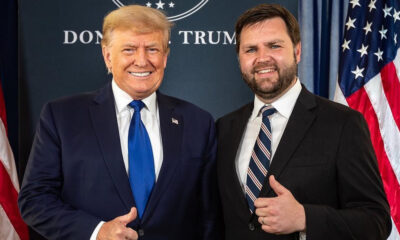Reviews
Employers Turn to AI and Digital Tools to Attract Top Talent

In a rapidly evolving employment landscape, businesses must move beyond standard job postings to capture the attention of top talent. Today’s forward-thinking recruiters use innovative tactics to identify, engage, and retain standout candidates, resulting in a dynamic, effective hiring process. Leveraging an applicant tracking system for recruiters enables companies to streamline operations and gain valuable insights as they build their teams.
Modern recruitment goes beyond tools, focusing on genuine candidate engagement and what today’s job seekers value most. By leveraging social media, video content, and strong employer branding, hiring is shifting from a transactional to a transformational approach. Immersive digital experiences, such as videos and virtual job fairs, strengthen early connections with candidates, enhancing the experience, reputation, and long-term retention. Additionally, analyzing recruitment data enables organizations to refine strategies, remove bottlenecks, and drive more effective, insight-driven talent acquisition.
Leveraging AI for Smarter Candidate Matching
Artificial intelligence now plays a transformative role in human resources, especially in resume screening and candidate fit analysis. AI-driven tools evaluate qualifications, experience, and even cultural alignment to predict which individuals will thrive in a specific role or organization. AI is redefining hiring in the digital age, enabling organizations to make faster, more precise decisions while maintaining scalability as candidate pools expand. As a result, the process becomes faster, more accurate, and scalable across ever-expanding candidate pools. AI not only enhances process efficiency but also lowers the risk of unconscious bias, ensuring a fairer selection for both employers and applicants.
Engaging Candidates Through Social Media
Social media is now fundamental for recruitment outreach. It allows organizations to tell their stories, highlight work culture, and directly interact with job seekers. Creative campaigns in which playful office mascots interact with audiences exemplify how viral content blurs the line between employer marketing and real recruitment opportunities. According to Forbes, this approach not only broadens the pool of potential hires but also signals authenticity and openness, qualities job seekers highly value in employers. This strategy enhances engagement and creates a more transparent, appealing recruitment process.
Implementing Video-First Recruitment Campaigns
The shift to video across recruitment touchpoints ranks among the most effective ways to convey company culture and value proposition. Videos attached to job descriptions, office environment tours, and testimonials from current employees create transparency and foster emotional connections with candidates. Video interviews continue this transparency, offering real-time, humanized interaction and an opportunity for two-way communication between recruiter and applicant.
Hosting Virtual Job Fairs
As the global workforce seeks flexibility and remote opportunities, virtual job fairs have become increasingly important. These events empower organizations to cast a wider net, connect with talent from multiple locations, and showcase available opportunities and values through live events or digital booths. Participants can chat directly with recruiters, attend information sessions, and even participate in on-the-spot screening, creating a lively, efficient, and inclusive hiring environment.
Offering Flexible Work Arrangements
Remote and hybrid working environments are now key differentiators in a candidate’s decision-making process. Employers who offer flexible schedules and support work-life balance not only attract a wider array of applicants but also see measurable increases in employee loyalty and productivity. A recent Gallup report found that 32% of remote employees cite flexible hours as their main reason for staying in a role, underscoring the growing influence of flexible work arrangements in modern recruiting.
Focusing on Employer Branding
Employer branding has become an essential element in the competition for top-tier talent. Organizations that authentically convey their mission, highlight actual team member experiences, and advocate for diversity, equity, and inclusion often gain an edge in a packed hiring market. Regularly sharing behind-the-scenes stories, celebrating wins, and featuring authentic voices from within the team imbue the employer brand with authenticity—making the organization memorable and desirable to high-performing prospects.
Utilizing Data-Driven Recruitment
Modern recruitment is increasingly data-driven. Metrics such as time-to-hire, candidate source quality, and cost-per-hire help recruiters spot inefficiencies and fine-tune their approach. By integrating robust applicant tracking and analytics systems, organizations can monitor campaign effectiveness, assess candidate experiences, and ensure hiring practices are inclusive and equitable. Leveraging these insights enables smarter, faster, and fairer decisions, ultimately creating a pipeline of high-potential talent.
Conclusion
Today’s most effective recruitment strategies embrace AI, social media, video, and flexibility—all built on a strong employer brand and fueled by actionable data. By innovating and iterating on these tactics, companies create magnetic candidate experiences and set themselves apart in the talent marketplace. Those that adapt quickly and thoughtfully will not only attract the brightest minds but also forge a resilient, engaged workforce for the future.

-

 Legal6 days ago
Legal6 days agoMichigan man JD Vance sentenced to 2 years for threatening Trump and JD Vance
-

 Politics1 week ago
Politics1 week agoU.S. to designate Maduro-linked Cartel de los Soles as terrorist organization
-

 Health7 days ago
Health7 days agoCambodia reports fatal H5N1 bird flu case in 22-year-old man
-

 World4 days ago
World4 days agoHurricane Melissa registered 252 mph wind gust, breaking global record
-

 Legal4 days ago
Legal4 days agoWoman in critical condition after being set on fire on Chicago train
-

 Politics7 days ago
Politics7 days agoEpstein survivors release PSA calling on Congress to release all files
-

 Legal4 days ago
Legal4 days ago1 dead, 2 injured in shooting at Dallas Walmart parking lot
-

 Legal3 days ago
Legal3 days agoSuspect in San Diego stabbing shot by authorities after fleeing into Mexico




